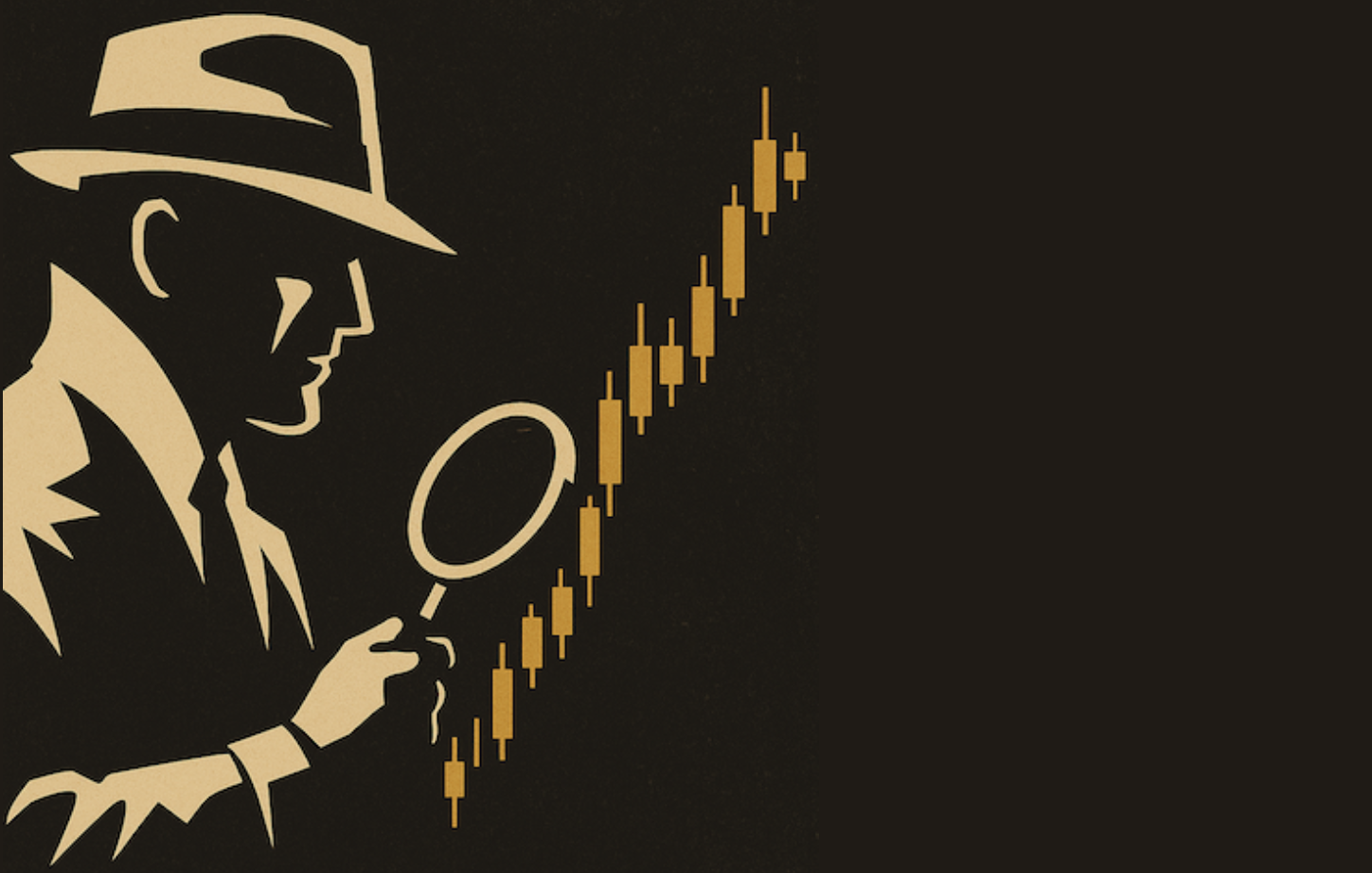REVIEW OF RECENT MARKET TRENDS -- MARKET RALLY CONTINUES HELPED BY FALLING OIL -- FALLING DOLLAR BOOSTS GOLD AND FOREIGN MARKETS -- RETAILERS ARE MARKED UP -- RISING RATES ARE GOOD FOR STOCKS
NO SURPRISES... I'm happy to see that the markets did pretty much what was expected while I was in Europe last week. Now that I'm back I thought I'd review some of the recent intermarket trends -- just to bring things up to date. Basically, there seems little doubt that the stock market has embarked on another upleg which should continue into the new year. What initially started as a rally in technology eventually spread to the Dow, which was the last of the major stock indexes to turn up. Recent stock strength has accompanied weakness in bond prices. An uptick in bond yields (partially in response to last week's strong employment report) is good news for stocks -- as long as rates don't climb too far. It also aids the rotation out of bonds and back into stocks and is a sign of more optimism. Unfortunately, that optimism hasn't helped the dollar which fell to a record low against the Euro and weakened against all other currencies. That pushed gold prices to a new 16-year high and has helped stabilize the CRB Index. The falling dollar didn't help oil, which fell under $50 after forming another October top. Falling oil is good news for stocks. Speaking of stocks, Chart 1 shows that the Nasdaq Composite Index is now challenging its summer high near 2050. The fact that it's On Balance Volume line is so strong argues for another upside breakout in prices. The Nasdaq/S&P 500 ratio has also broken its 2004 down trendline. That's good news for the Nasdaq and the S&P 500 which achieved a breakout of its own.

Chart 1
S&P 500 HITS 52-WEEK HIGH ... The weekly chart of the S&P 500 (plotted through Friday) shows two bullish developments. The S&P weekly bar hit a new 52-week high. And it did so on rising volume. That's a good combination. The monthly bars in Chart 3 put the S&P trend in better perspective. It confirms that the 2004 declining trend was nothing more than a "fourth wave" consolidation pattern and that a "fifth up wave" has begun. The next chart hurdle (which will probably be broken) is the early 2002 peak near 1177. After that, the next upside target is to the 62% retracement line near 1250. Back on October 1, I published a "fifth wave" target in the S&P 500 to 1245. That puts the next upside target for the S&P in the 1245-1250 zone, which is another 7% from current levels.

Chart 2

Chart 3
DOW IS LAST TO TURN UP ... Back on October 26, I wrote about why I felt new highs by the Dow Transports and Utilities would start to pull the Dow Industrials higher. I also talked about the Dow starting to bounce off the lower trendline of its 2004 "trend channel". I suggested that the Dow would at least reach the upper channel line during the fourth quarter. It's done that and more. Chart 4 shows the Dow Industrials closing over that line last Friday in pretty convincing fashion. As was the case with the other major stock indexes, last week's price gains were accompanied by impressive upside volume. It seems inevitable that the Dow will also exceed its summer high near 10390. An eventual move up to its 2004 high near 10700 wouldn't be surprising. The Dow got a lot help from falling oil.

Chart 4
OIL FALLS UNDER $50 -- ENERGY STOCKS CORRECT ... One of the reasons for new stock market strength is falling oil prices. Oil fell below $50 last week and was down again today. So far, there's no sign of it turning back up again. I recently suggested that $40 would be a new floor under oil. Its daily chart suggests that a decisive close under $48 could signal a further drop to the low 40's. That's hurting energy stocks. Chart 6 shows the Oil Service Holders (OIH) breaking their 50-day average today. Its relative strength continues to drop, which shows that money is moving out of energy stocks and into just about everything else. This shouldn't come as a surprise since I've shown that rotation several times over the last few weeks. Bad news for oil is good news for the stock market.

Chart 5

Chart 6
GOLD AND DOLLAR BREAK OUT IN OPPOSITE DIRECTIONS ... The next two charts don't come as a surprise either. Gold finally broke through its early 2004 peak to reach a new 16-year high. At the same time, the US Dollar Index fell to another new low. The dollar is falling against all major international currencies and should continue to do so. That will help support the ongoing bull market in gold. I recently wrote that a falling dollar would have two main effects. One was a rising gold market. The other was out performance by foreign stock markets. That's because money flows toward countries and regions with stronger currencies. Emerging markets benefit from rising commodities which are another side effect of a weaker dollar. Chart 9 shows the Emerging Market iShares hitting a new high recently. Its relative strength line has been outperforming the S&P 500 since May. [It's helpful to think of emerging markets as small cap global stocks. Just as small caps usually lead a U.S. market revival here, emerging market leadership is a bullish sign for global equities]. Chart 10 shows the EAFE Index iShares also doing much better than the US. [EAFE stands for Europe Australia and Far East]. Australia has been another major beneficiary of rising commodity prices, and is helped by a strong currency which helps attract foreign money.

Chart 7

Chart 8

Chart 9

Chart 10
RETAILERS GET MARKED UP ... In my last Market Message, which I wrote on Friday October 29 before leaving for Europe, I listed what I saw as bullish sector rotations which supported a rising stock market. Among many others, I mentioned the fact that retailers were starting to show upside leadership (owing to lower oil prices). Chart 11 shows what's happened since then. Retail Holders (RTH) virtually exploded to a new 52-week high on rising volume last week. Its relative strength line, which bottomed during August, hit a new 2004 high as well against the S&P 500. I take that to mean the investors are turning more optimistic on the market and the economy. Retail spending accounts for two-thirds of the economy. There's no guarantee they'll be right, but the line on the chart is pointing upwards. That's good enough for me.

Chart 11
LONG-TERM RATES STARTING TO BOUNCE ... Long-term rates started climbing again last week. Over the short to intermediate term, that's good news. That's because rising rates shows more optimism on the economy -- as reflected in Friday's employment-inspired jump in the 10-year T-note yield. When yields rise, bond prices fall. That also means that money is coming out of bonds and moving into stocks. That also shows more confidence in the market and the economy. A decisive move over 4.25% would be a sign that long-term rates may have bottomed. Although it's taken a lot longer than I expected, it's just a matter of time before rising commodity prices start pulling inflation-sensitive bond yields higher. In time, rising rates become bad for stocks. But we're nowhere near that point yet. As I've written many times recently, I expect the market rally to continue at least into January. Then we'll see how things look after the start of the new year. In the meantime, enjoy the ride.

Chart 12








